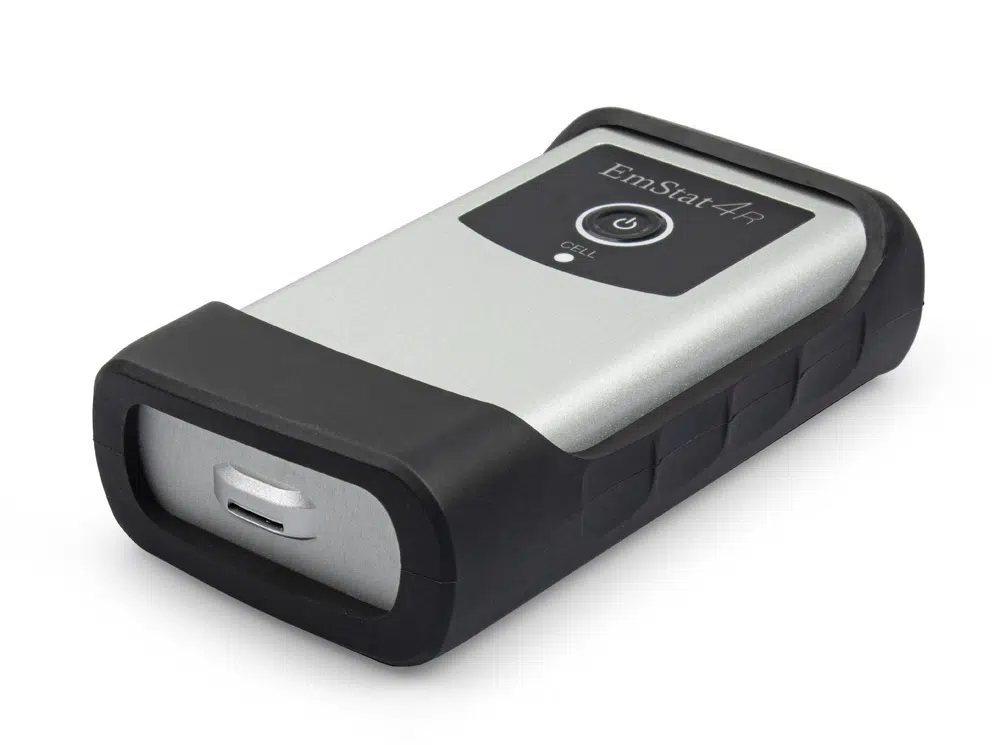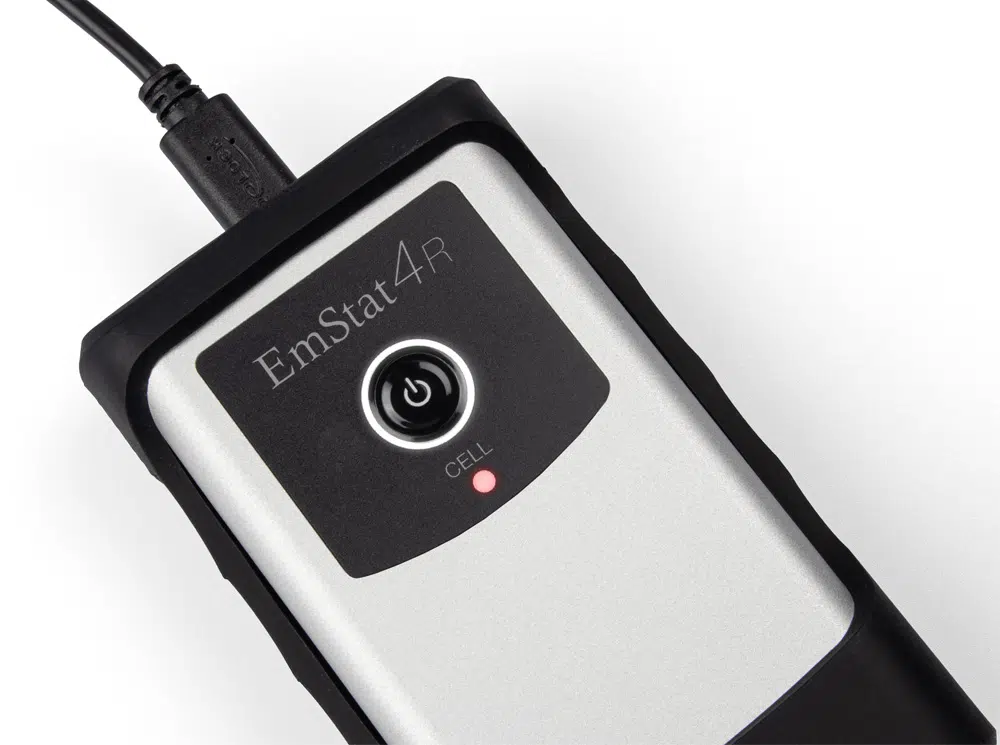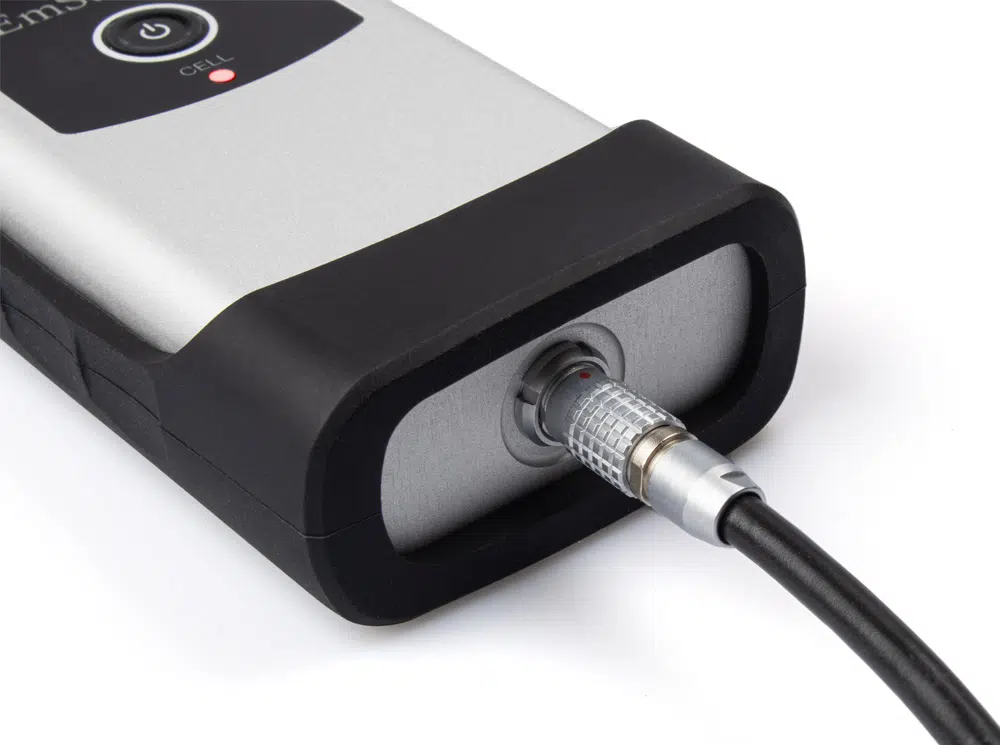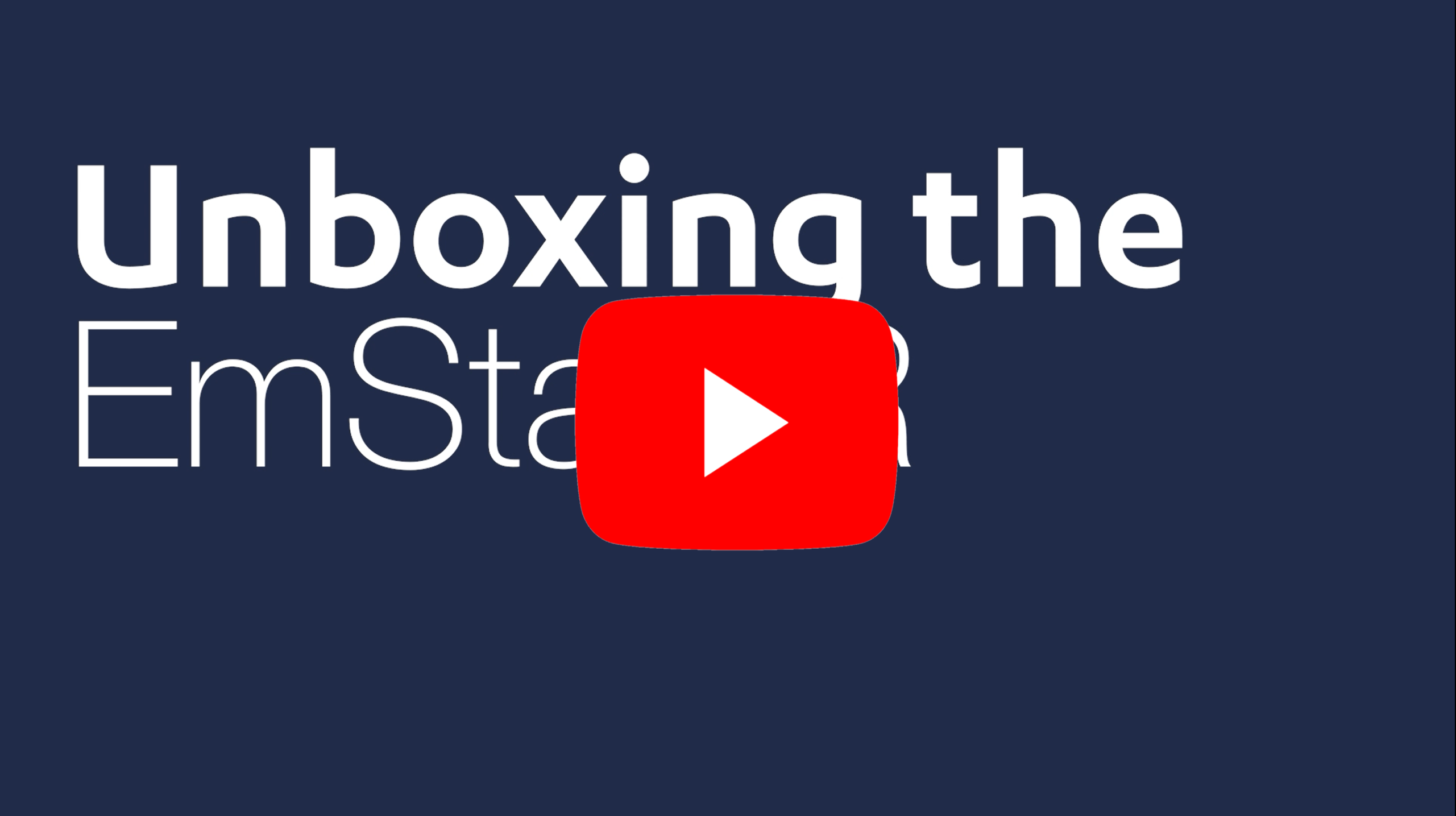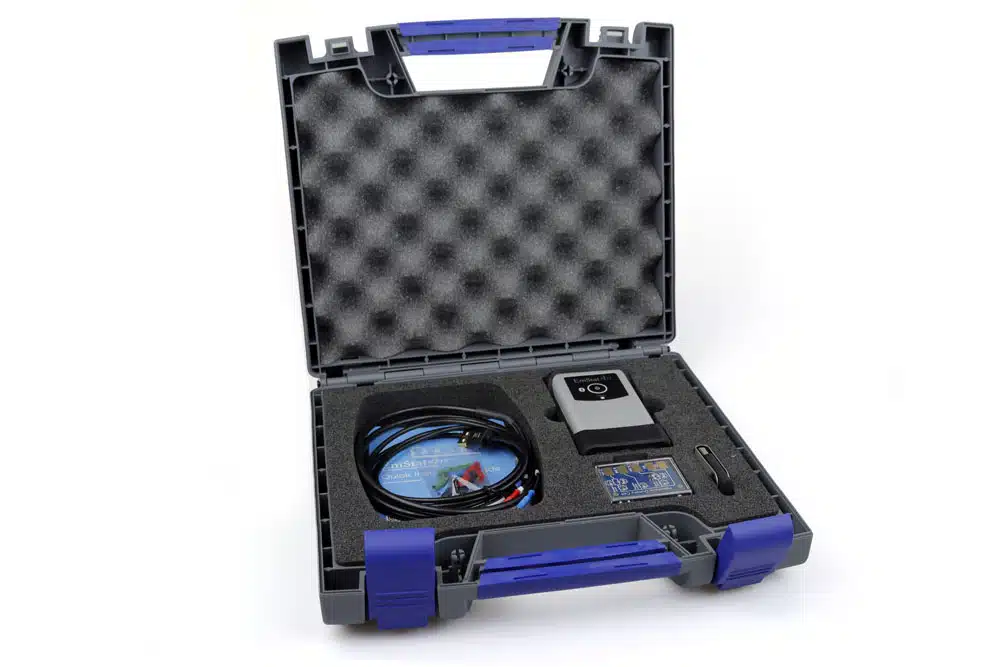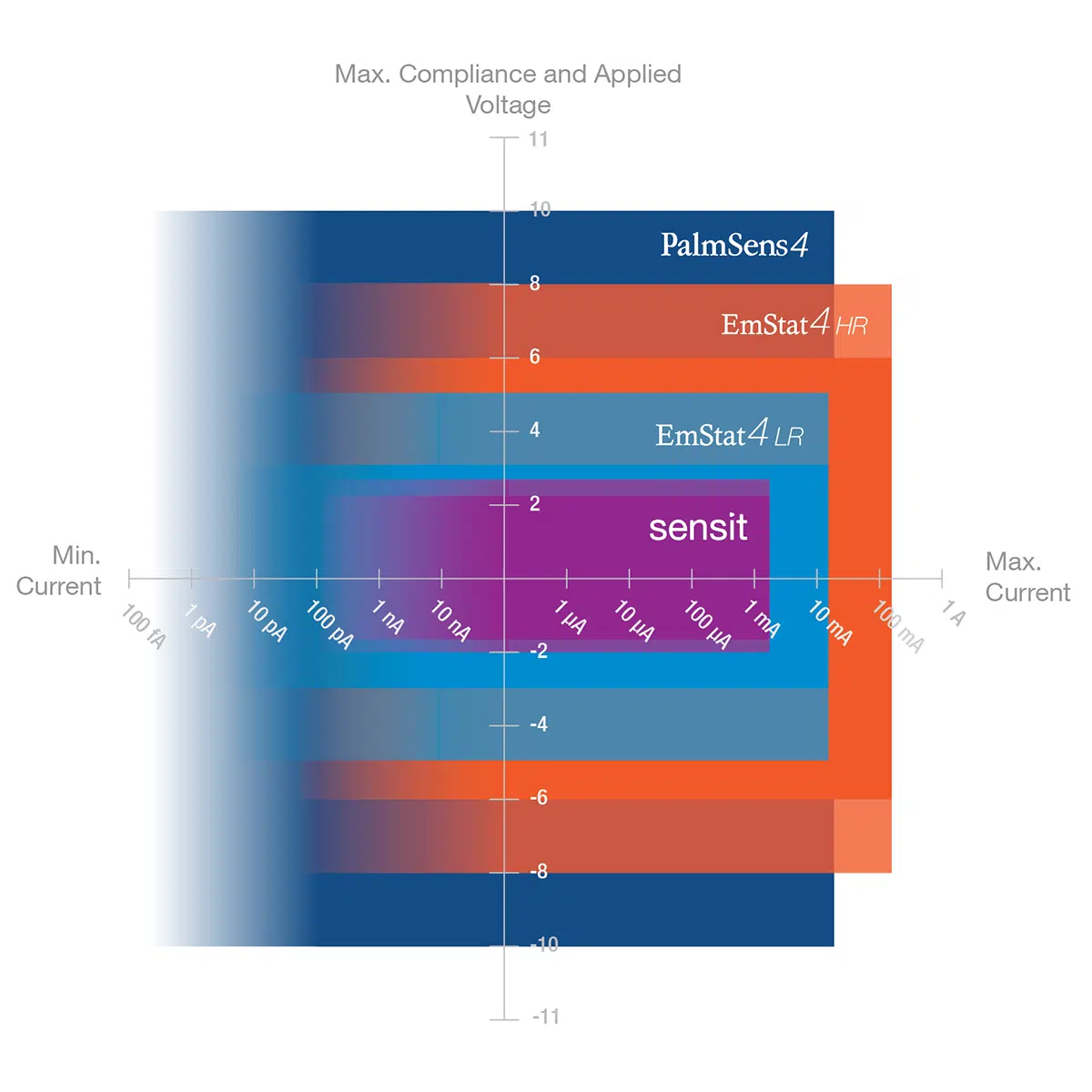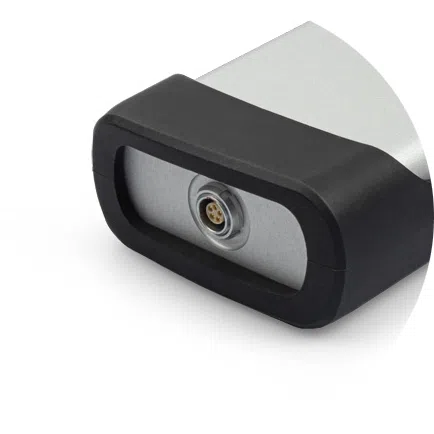EmStat4R
Rugged wireless potentiostat
- Portable: wireless in a rugged housing
- Available with connection module for sensor cable or SPE
- Potential range ±3 V
- Max. current ±30 mA
- Optional impedance analyzer: 10 μHz up to 200 kHz
Description
The EmStat4R delivers desktop performance in a rugged enclosure. The EmStat4R is a portable Battery or USB-powered Potentiostat, Galvanostat, and optional a Frequency Response Analyzer (FRA) for Electrochemical Impedance Spectroscopy (EIS). The EmStat4R is great for applications that require low currents, from 30 mA down to picoamps, such as sensor applications. The EmStat4R is controlled with PSTrace for Windows, the Android app PStouch, or you can write your own MethodSCRIPT and control it from any platform or operating system.
Two versions
The EmStat4R is available with a cell cable or SPE connection module. Both versions can be configured with optional EIS/FRA with a maximum frequency of 200 kHz. See specifications for more information.
|
EmStat4R SNS |
EmStat4R SPE |
||
|---|---|---|---|
|
|
|
||
| Connection module | Cell cable | Connection module | Screen-printed-electrode |
| Cell cable included | Yes | Cell cable included | No |
| Electrode connections | WE, RE, CE and ground | Electrode connections | RE, WE, CE |
| Connectors | 2 mm banana | Sensor pitch | 2.54 mm |
| Maximum sensor width | 11 mm | ||
| Allowed sensor thickness | Between 0.1 mm and 0.8 mm | ||
Always a backup
Always a backup
The EmStat4R is equipped with 500 MB internal storage memory for storing your measurements as a backup. All internally stored measurements can be browsed and transferred back to the PC easily using the PSTrace software for Windows. Your data is always with your instrument wherever you take it.Standard included
A standard EmStat4R includes a rugged carrying case with:
- EmStat4R
- Rugged case
- USB-C cable
- Cell cable: high quality, double-shielded cable with 2 mm banana connectors for Working, Counter, Reference electrode and Ground
- 4 crocodile clips
- Dummy Cell
- PSTrace software for Windows (on USB drive)
- Manual (hardcopy)
- Quick Start document
- Calibration report
- Three year warranty
Specifications
| General | |
|---|---|
dc-potential range
The maximum potential difference, that can be applied between WE and RE.
|
±3 V |
compliance voltage
The compliance voltage is the maximum voltage that can be applied between the working and counter electrode. Another name could be the maximum cell potential. Continue reading
|
±5 V |
| maximum current | ±30 mA |
| max. data acquisition rate | 1M samples /s |
| Potentiostat | |
|---|---|
| applied potential resolution | 100 µV |
applied potential accuracy
The applied potential accuracy describes how close to the real values your applied potential is.
|
≤ 0.2% ±1 mV offset |
current ranges
A potentiostat measures current. For optimal precision, the range between which currents are measured is split into multiple current ranges. A current range defines the maximum current a potentiostat can measure in a certain range. This means it will also determine the resolution, because the number of bits or rather states is fixed, while the current range is variable.
|
1 nA to 10 mA 8 ranges |
measured current resolution
The lowest observable difference between two values that a measurement device can differentiate between.
|
0.009% of CR (92 fA on 1 nA range) |
| measured current accuracy
The current accuracy describes how close to the real values your measured current is.
|
< 0.2% of current ±20 pA ±0.2% of range |
bandwidth settings
The range of frequencies between which you can measure. Continue reading
|
320 Hz, 3.2 kHz, 30 kHz or 570 kHz |
| Galvanostat | |
|---|---|
current ranges
A potentiostat measures current. For optimal precision, the range between which currents are measured is split into multiple current ranges. A current range defines the maximum current a potentiostat can measure in a certain range. This means it will also determine the resolution, because the number of bits or rather states is fixed, while the current range is variable.
|
10 nA, 1 uA, 100 uA, 10 mA 4 ranges |
| applied dc-current | ±3 * CR (current range) |
| applied dc-current resolution | 0.01% of CR |
| applied dc- current accuracy
The current accuracy describes how close to the real values your measured current is.
|
<0.4% of current ±20 pA ±0.2% of range |
| potential ranges |
50 mV, 100 mV, 200 mV, 500 mV, 1 V |
| measured dc-potential resolution |
96 µV at ±3 V (1 V range) |
| measured dc-potential accuracy | ≤ 0.2% ±1 mV offset |
bandwidth settings
The range of frequencies between which you can measure. Continue reading
|
320 Hz, 3.2 kHz, 30 kHz or 570 kHz |
| FRA / EIS | |
|---|---|
| frequency range | 10 µHz to 200 kHz |
| ac-amplitude range |
1 mV to 900 mV rms, or 2.5 V p-p |
| GEIS | |
|---|---|
| frequency range | 10 µHz to 100 kHz |
| ac-amplitude range |
0.9 * CR (Arms) |
| Electrometer | |
|---|---|
electrometer amplifier input
The amplifier input resistance of the amplifier in the electrometer determines the load that the amplifier places on the source of the signal being fed into it. Ideally the resistance is infinite, and the load to be zero to not to influence your measurement.
|
> 1 TΩ // 10 pF |
bandwidth
The range of frequencies between which you can measure. Continue reading
|
10 kHz default or 500 kHz for EIS and fast CA/CP |
| Other | |
|---|---|
| electrode connections |
Two versions:
|
| housing |
aluminum body only: |
| weight |
± 310 g |
| communication |
USB-C or wireless |
| Battery life |
|
| internal storage space |
500 MB, equivalent to > 15M datapoints |
| EmStat4R EIS Accuracy Contour Plot |
|---|
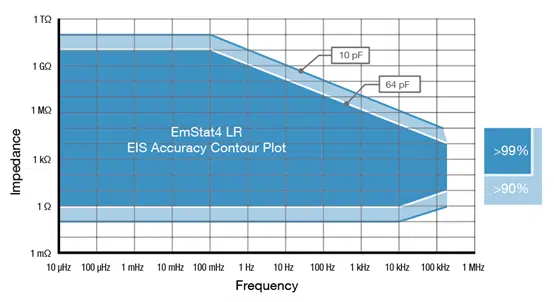 |
Note The accuracy contour plots were determined with an ac-amplitude of ≤10 mV rms for all limits, except for the high impedance limit, which was determined using an ac-amplitude of 250 mV. The standard cables were used. Please note that the true limits of an impedance measurement are influenced by all components in the system, e.g. connections, the environment, and the cell. |
Software
PSTrace
PSTrace for Windows provides support for all techniques and device functionalities. With a smooth simple interface, showing only the applicable controls, PSTrace is suitable for all levels of user experience. Functions include:
- Direct validation of method parameters
- Equivalent Circuit Fitting
- Automated peak search
- Scripting for running an automated sequence of measurements
- Open data in Origin and Excel with one click of a button
- Browse measurements on instrument’s internal storage
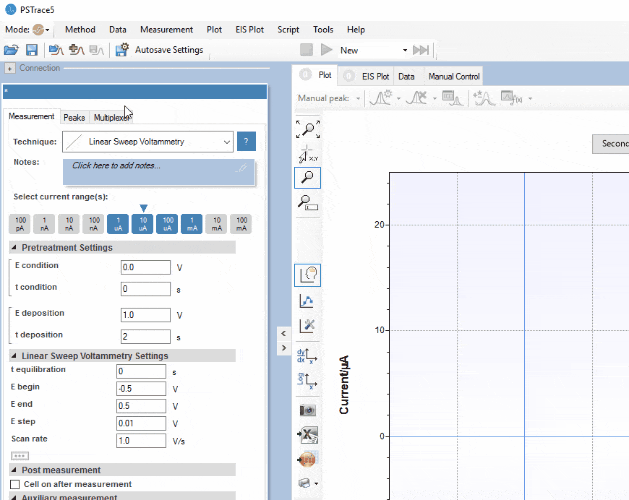
PStouch
PStouch works with all our single channel and multiplexed instruments. PStouch functions include:
- Setting up and running measurements
- Analysing and manipulating peaks
- Sharing data directly via e-mail, Dropbox, or any other file sharing service
- All files compatible with PSTrace

MethodSCRIPT™ communications protocol
The EmStat4 potentiostat module has an on-board parser for the MethodSCRIPT™ scripting language. This language allows developers to program a human-readable script for the EmStat4 module on any platform or operating system. The simple script language allows for running electrochemical techniques supported by EmStat4 and makes it easy to combine different measurements and other tasks.

Software Development Kits
The PalmSens Software Development Kits (SDKs) for .NET can be used with any of our instruments or OEM potentiostat modules to develop your own software. The SDK’s come with a set of examples that shows how to use the libraries.
PalmSens SDKs with examples are available for the following .NET Frameworks:
- WinForms
- WPF
- Xamarin (for Android)

Downloads
Software (1)
| Name | Last updated | |
|---|---|---|
| PSTrace PC software for all single channel instruments PSTrace software is shipped as standard with all single channel and multiplexed instruments. The software provides support for all techniques and device functionalities. | 08-07-24 |
Documentation (6)
| Name | Last updated | |
|---|---|---|
| EmStat4R Brochure The EmStat4R brochure contains an overview of all the supported techniques, specifications, kit contents, the software PSTrace, the Android app PSTouch and MethodSCRIPT | 25-04-24 | |
| MethodSCRIPT v1.5 The MethodSCRIPT scripting language is designed to improve the flexibility of the PalmSens potentiostat and galvanostat devices for OEM users. It allows users to start measurements with arguments that are similar to the arguments in PSTrace. PalmSens provides libraries and examples for handling low level communication and generating scripts for MethodSCRIPT devices such as the EmStat Pico and EmStat4. | 25-03-24 | |
| EmStat4M Communication Protocol V1.3 Describes how to communicate with the EmStat4M directly and how to send MethodSCRIPTS. | 25-03-24 | |
| EmStat4R Operator Manual Learn how to connect the instrument, understand the specifications, use the features and troubleshoot if needed. | 13-03-24 | |
| EmStat4M Communication Protocol V1.2 Describes how to communicate with the EmStat4M directly and how to send MethodSCRIPTS. | 01-02-23 | |
| MethodSCRIPT v1.4 The MethodSCRIPT scripting language is designed to improve the flexibility of the PalmSens potentiostat and galvanostat devices for OEM users. It allows users to start measurements with arguments that are similar to the arguments in PSTrace. PalmSens provides libraries and examples for handling low level communication and generating scripts for MethodSCRIPT devices such as the EmStat Pico and EmStat4. | 01-02-23 |
Application Note (1)
| Name | Last updated | |
|---|---|---|
| How to use Drop Detection with the SPE Connection Module Describes the functionality and working principle of Drop Detection with the SPE Connection Module for EmStat Go and EmStat4R. | 03-10-22 |




























